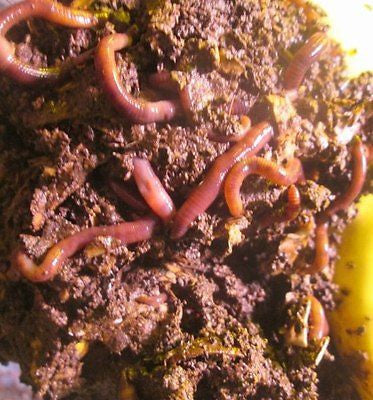The smart Trick of Red Wiggler Express That Nobody is Discussing
Table of ContentsAn Unbiased View of Red Wiggler ExpressA Biased View of Red Wiggler ExpressThe 7-Minute Rule for Red Wiggler ExpressAll about Red Wiggler ExpressMore About Red Wiggler Express
It's secure to say this things would have been wonderful to add as a to vermicomposting systems! And the prospering Red Worm population? It just never ever happened. Even in the load that was set up straight before backyard composters with existing Red Worm nests. Yet these nutritionally-boosted timber chip habitats are absolutely filled with Lumbricus sp.
Several varieties, consisting of Red Wigglers, European Nightcrawlers, and Lumbricus varieties were brought over from the European continent. But right here's the thingNative or otherwise - and as gifted as they go to being able to make it through in a wide-range of settings and problems -. Simply put, they are even more likely to socialize in any kind of energetic composting systems you have actually established, than they are to roam off and start wrecking the setting.
Origins call for oxygen for respiration and count on smooth airflow within the dirt to thrive. When it rains, soil can become saturated with water, reducing the oxygen readily available and preventing vitamins and mineral absorption. To keep an ideal balance, the dirt must permit water to drain pipes adequately, leaving sufficient space for air to support origin wellness
Little Known Questions About Red Wiggler Express.

When it concerns worms for composting, what enters your mind? If you were an earthworm breeder, supplier, or simple garden enthusiast, then you would certainly know that red wiggler worms are the suitable worms for vermicomposting. For more information concerning these earth marvels, reviewed several of the red worm facts below.
Some Ideas on Red Wiggler Express You Need To Know
So, what do worms consume? Well, these red wriggler worms can be fed with kitchen area scraps and garden wastes. So, any kind of worn out organic things will certainly do like veggie and fruit peels, crushed egg shells, made use of tea bags, coffee grounds, turf trimmings, dry leaves, and others. Make sure not to feed them foods items that are oily, citrusy, or has meat or dairy products in them.

This habits makes them appropriate permanently in worm containers, compost heap, and various other confined spaces where organic waste is plentiful. Developing an optimum setting for red wigglers calls for a thoughtful approach. Consider the adhering to important aspects to take care of red wigglers in your home and guarantee their wellness: Utilize a bed linen of shredded newspaper or cardboard.

Red wiggler worms reproduce by laying little, lemon-shaped eggs in safety cocoons. These cocoons are normally deposited in the bedding and hatch right into infant worms within a few weeks.
About Red Wiggler Express
Their versatility and resilience have actually made them a popular selection for vermicomposting in different areas around the globe. Yes! They can survive from a variety of 32F to 90F. They are super versatile critters. Consider protective procedures for very severe temperatures such as: Protecting the worm bin with layers of straw or leaves.

When dealing with your red wigglers it is essential to bear in mind to: 1) K.I.S.S (Keep it Simple) and 2) whatever in moderation. These guidelines apply to feeding your compost worms, sprinkling your worm containers, and nearly whatever else associated with caring for them. Simply bear in mind - you can constantly add more food later on (but it's tough to get rid of feed once it's been contributed to a bin!).
Due to the fact that I fed the red wigglers and compost worms also much, they weren't able to maintain up and over time the older food went uneaten and developed anaerobic conditions that killed the worms. Here're the 6 gold regulations for just how frequently and how much to feed your worms: Regulation # 1: Moderation!
Indicators on Red Wiggler Express You Need To Know
Uneaten food will lead to anaerobic problems that will kill your live worms. Policy # 6: After the very first feeding, feed the worms 1/3 to 1/2 of their weight.
Comments on “Red Wiggler Express - An Overview”